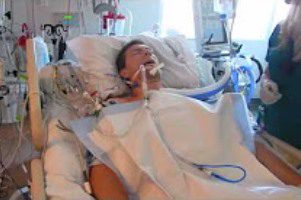
Exposed to radiation in imaging procedures that may be at increased risk for developing cancer. A new study published in Circulation examines the risk of cancer in children with heart disease. Because these children are often exposed to ‘radiation’ in imaging procedures , they may be at increased risk for developing cancer later in life. […]

Exposed to radiation in imaging procedures that may be at increased risk for developing cancer. A new study published in Circulation examines the risk of cancer in children with heart disease. Because these children are often exposed to ‘radiation’ in imaging procedures , they may be at increased risk for developing cancer later in life. The authors of the study found that the risk is low or negligible for most children, but the risk is significant in kids who undergo more complex procedures.
Jason N. Johnson and his colleagues evaluated the cumulative effect dose (ED) of ‘radiation’ from the ‘radiation’ examinations to determine the lifetime risk of cancer in children with heart disease. The researchers included 337 children 6 years and younger who underwent one of seven cardiac surgery procedures at a single institution between 2005 and 2010.
In total, the 337 children were exposed to 13,932 radiation exams; the median number of ‘radiation’ imaging procedures conducted on the children was 17. The vast majority of the exams (92%) were conventional radiographs and 81 percent of cumulative exposure was attributed to cardiac catheterization and computed tomography.
tomography.
The authors found that for children, the risk seemed to be low, with a median cumulative effective dose of 2.7 millisievert (mSv); this is lower than the annual background exposure of 3.0-3.5 mSv in the U.S. However, the researchers found that not all children were exposed to the same amounts of ‘radiation’. The researchers said that the median annual dose ranged from 0.9 to 0.29 mSv for 5 out of 7 procedures, which is “reassuringly low”. But complex procedures exposed children to significantly higher levels of ‘radiation’. In children who underwent the Norwood operation and cardiac transplantation, the median dose was 20.08 and 42.54, respectively.
The findings revealed that cardiac catheterization accounts for 60 percent of the total radiation exposure, even though it only represents 1.5 percent of all imaging procedures.
Less complex procedures yielded a small lifetime attributable risk (LAR) for cancer, ranging from a median of 6-20 cases per 100,000 children exposed. With the Norwood procedure, this risk was much higher at 799 cases per 100,000. In cardiac transplantation the LAR was 1,677 per 100,000. The authors said that the risk is significantly higher in girls than boys because of the impact of ‘radiation’ on breast and thyroid cancer.
“To reduce long-term cancer risk, providers should target reducing ‘radiation’ exposure in the highest-risk cohorts, including those children who will require repetitive high-exposure imaging and females because of their increased cancer risk. Providers can consider our relative exposure estimates when choosing between various radiation-producing imaging modalities.” he authors wrote.
The personal injury attorneys at Parker Waichman LLP offer free, no-obligation case evaluations. For more information, fill out our online contact form or call 1-800-YOURLAWYER (1-800-968-7529).


